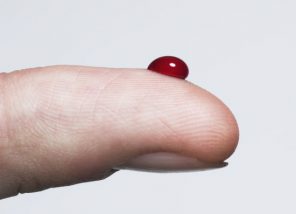One of the largest obstacles when it comes to blood transfusions is having the substance ready on the spot in case of emergency. What if the solution was a bag of ‘powdered’ blood cells?
An obstacle, when it comes to blood transfusions, is having enough of it ready on the spot in case of emergency. The problem with that is blood needs proper refrigeration and a certain temperature for safe transfusions.
What if the solution was a bag of ‘powdered’ blood cells that, when combined with water, could be immediately used for emergency transfusions?
It sounds like something out of a sci-fi movie, but that’s the exact technology doctors are working on to save lives in the future.
 “Transfusion medicine is challenged by the limitations arising from storage of red blood cells, which are a living tissue, that must be kept cold, have a shelf-life of only 42 days, and must be used within about four hours of removal from refrigeration,” says Dr. Allan Doctor, a professor of pediatrics, biochemistry, and molecular biophysics at Washington University in St Louis, Missouri.
“Transfusion medicine is challenged by the limitations arising from storage of red blood cells, which are a living tissue, that must be kept cold, have a shelf-life of only 42 days, and must be used within about four hours of removal from refrigeration,” says Dr. Allan Doctor, a professor of pediatrics, biochemistry, and molecular biophysics at Washington University in St Louis, Missouri.
Related: This blood test may detect concussions
Doctor & his team have created an artificial blood substitute called ErythroMer. It’s in its very early stages of production and testing, but the results of trials conducted on mice seem promising. When the mice were given ErythroMer, the fake blood delivered oxygen to tissues as efficiently as normal mouse blood. The artificial blood was able to resuscitate rats that were in shock, and lost 40% of their blood, Medscape says.
Doctor presented the work in early December at the American Society of Hematology’s 58th Annual Meeting.
As mentioned, there’ll need to be much more study and refinement to determine if ErythroMer is plausible for human use. Doctor says ErythroMer could radically change care for dire situations like military casualties, or for people that need blood or resuscitation before getting to a hospital.
Related: Canadian Doctor Becomes First to Break Blood-Brain Tumor Barrier
“Next steps are to confirm our promising findings in a larger animal model, screen and address any toxicities, scale production, and eventually test for safety and efficacy in humans,” says Doctor.
Photo credit: axivan.com/Shutterstock












